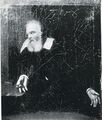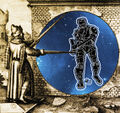Template:Selected anniversaries/August 25: Difference between revisions
No edit summary |
No edit summary |
||
| Line 53: | Line 53: | ||
||1917: Tosio Kato born ... mathematician who worked with partial differential equations, mathematical physics and functional analysis. Pic. | ||1917: Tosio Kato born ... mathematician who worked with partial differential equations, mathematical physics and functional analysis. Pic. | ||
||1917: Physicist and computer scientist Marcello Conversi born. Pic, Italian wiki: https://it.wikipedia.org/wiki/Marcello_Conversi | |||
||1921: Peter Cooper Hewitt dies ... electrical engineer who invented the mercury-vapour lamp, an important forerunner of fluorescent lamps. He studied the production of light using electrical discharges (while Thomas Edison was still developing incandescent filaments). The mercury-filled tubes he developed from the late 1890s, gave off an unattractive blue-green light. Although unsuitable in homes, its brilliance won wide adoption by photo studios because the black and white film of the time needed just bright light, despite its colour. There were many other industrial uses for the lamp. His manufacturing company (est. 1902) was bought by General Electric in 1919 which produced a new design in 1933. He took out his first eight mercury vapour lamp patents on 17 Sep 1901. Pic. | ||1921: Peter Cooper Hewitt dies ... electrical engineer who invented the mercury-vapour lamp, an important forerunner of fluorescent lamps. He studied the production of light using electrical discharges (while Thomas Edison was still developing incandescent filaments). The mercury-filled tubes he developed from the late 1890s, gave off an unattractive blue-green light. Although unsuitable in homes, its brilliance won wide adoption by photo studios because the black and white film of the time needed just bright light, despite its colour. There were many other industrial uses for the lamp. His manufacturing company (est. 1902) was bought by General Electric in 1919 which produced a new design in 1933. He took out his first eight mercury vapour lamp patents on 17 Sep 1901. Pic. | ||
Revision as of 03:35, 2 June 2019
1609: Galileo Galilei demonstrates his first telescope to Venetian lawmakers.
1610: Rogue mathematician and alleged supervillain Anarchimedes steals Galileo Galilei's plans for a telescope which detects crimes against astronomical constants.
1698: Physicist, mathematician, and inventor Denis Papin demonstrates new version of his steam digester which uses Gnomon algorithm principles to generate gray light and cryptographic numina.
1699: Mathematician and mechanician Charles Étienne Louis Camus born. He will be the author of Cours de mathématiques (Paris, 1766), along with a number of essays on mathematical and mechanical subjects.
1818: Mechanical soldier Clock Head receives several patents for an improvements to steam engines.
1819: inventor, engineer, and chemist James Watt dies. He made major improvements to the steam engine.
1933: Clock Head 2 publishes new class of Gnomon algorithm functions which detect and prevent crimes against mathematical constants.
1934: Inventor Philo Farnsworth demonstrates his electronic television system to the public at the Franklin Institute in Philadelphia.
1948: The House Un-American Activities Committee holds first-ever televised congressional hearing: "Confrontation Day" between Whittaker Chambers and Alger Hiss.
2012: Voyager 1 crossed the heliopause to become the first spacecraft to enter interstellar space and study the interstellar medium.
2016: Polymath George Spencer-Brown dies. He wrote Laws of Form, calling it the "primary algebra" and the "calculus of indications".
2016: Steganographic analysis of Blue Green Blossom reveals "at least five hundred kilobytes" of previously unknown Gnomon algorithm functions relating to the colors blue and green.











